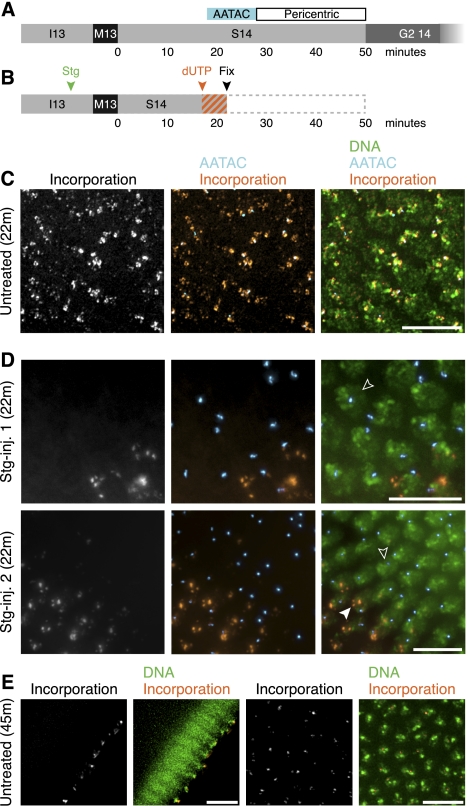Figure 2.
Late-replicating sequences replicate prematurely during a Cdc25-accelerated S phase. (A) A timeline illustrating when the AATAC satellite sequence and the pericentric sequences replicate in S-phase 14 of an untreated embryo (Shermoen et al. 2010). (B) A schematic of the experiment shown in C and D. Stg mRNA was injected (as shown in D) in cycle 13 (green arrowhead), fluorescent nucleotide (dUTP) was injected in mid-S-phase 14 (orange arrowhead), and embryos were fixed shortly after (black arrowhead) to give a brief labeling period (orange/gray stripes). (C) A region of an untreated embryo fixed 22 min after mitosis 13. All nuclei exhibit multiple puncta of incorporation (orange), and in most nuclei, incorporation colocalizes with the late-replicating AATAC satellite sequence (cyan/white in overlap). (D) Regions of two Stg mRNA-injected embryos fixed 22 min after mitosis 13. Many nuclei (open arrowheads) lack incorporation (orange). Labeled nuclei show restricted apical foci (closed arrowhead) that do not colocalize with the AATAC satellite (cyan). (E) Cross-sectional (left) and en face (right) views of fluorescent nucleotides incorporated late (∼40–45 min post mitosis 13) during S-phase 14 in an untreated embryo. Note the focal, apically located incorporation pattern (orange), which is typical of late S-phase 14. Bars, 10 μm.

